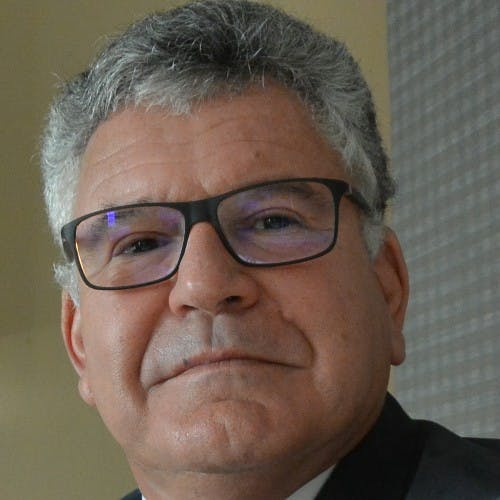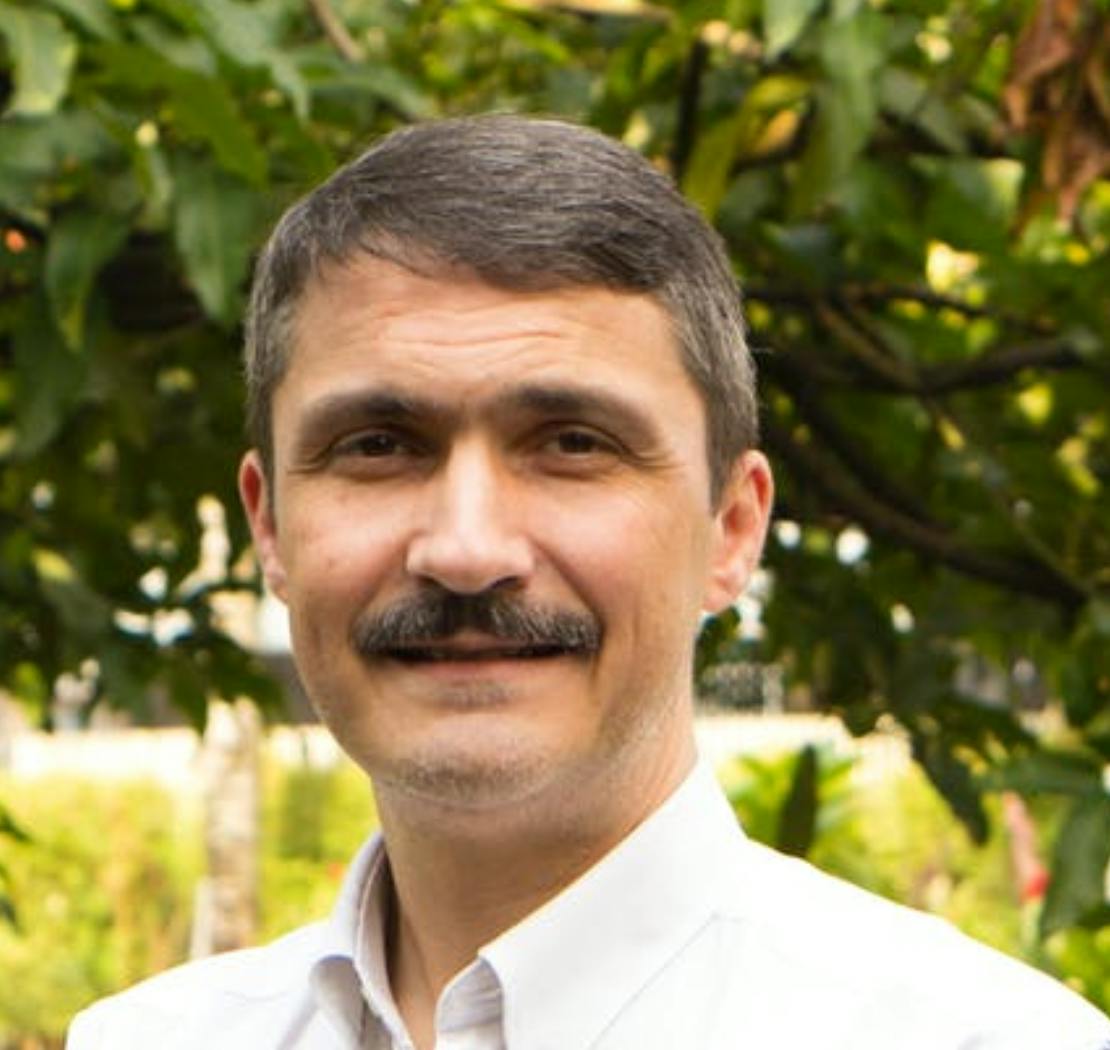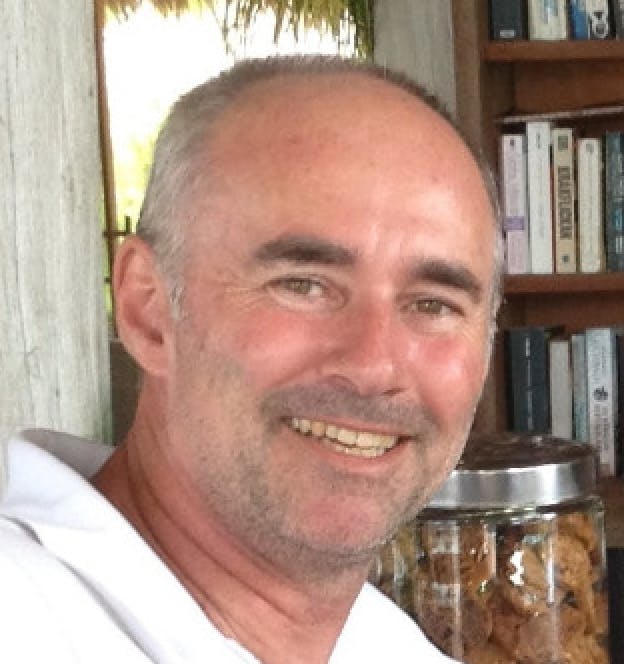The Covid-19 pandemic could finally come to an end in 2022, or it could go the opposite way, putting the business world in a state of high alert with the constant emergence of new virus variants. Working with such uncertainty poses huge challenges for businesses, particularly in their plans to drive sustainability through business operations, strategy and planning.
To continue reading, subscribe to Eco‑Business.
There's something for everyone. We offer a range of subscription plans.
- Access our stories and receive our Insights Weekly newsletter with the free EB Member plan.
- Unlock unlimited access to our content and archive with EB Circle.
- Publish your content with EB Premium.
Eco-Business spoke to business leaders and experts working in Asia Pacific to get a sense of what could be around the corner in the 12 months ahead for a range of business sectors, from finance, energy and shipping, to palm oil, food and hospitality.
Finance

Rousseau Anai, former Asia Pacific chief executive of financial services group, Cantor Fitzgerald
We asked Rousseau Anai, former Asia Pacific chief executive of financial services group, Cantor Fitzgerald.
What is the biggest sustainability risk for the finance industry in 2022?
For the past decade, financial returns have been strongly supported by central banks flooding markets with liquidity. This is unsustainable as it relates to the financial system itself, and it will be tested in 2022 as inflation picks up and rates rise. There are implications for sustainable finance, which has boomed over the same period and given rise to widespread greenwashing. As money becomes scarcer, investors will be more discerning, and companies will have to demonstrate real credentials and sustainable impact when trying to attract money under the sustainability banner.
What is your prediction for the finance industry in 2022?
Market volatility will increase as a result of uncertainty around the path of interest rates and other macro events. Combined with the increasing scrutiny from investors of companies who make sustainability-related claims, this will lead to a bifurcation of the market into companies who are truly making an impact, while enjoying better returns and lower volatility, and those which are merely engaged in greenwashing.
Food

Beverley Postma, executive director, Grow Asia
We asked Beverley Postma, executive director for Grow Asia, a platform that brings together farmers, governments, the private sector and non-governmental organisations (NGOs) to develop more sustainable agriculture.
What is the biggest sustainability risk for the food industry in 2022?
The fragility of our global food system is readily acknowledged, but it has taken the twin realities of a global pandemic and a climate emergency to capture the imagination of investors. We are now seeing green shoots of systemic change, driven largely by the economic risk-benefit forecasts of a more resilient food supply. The biggest risk currently lies in the fragmented nature of these investments. Siloed innovations and quick fix ESG [environmental, social and governance] metrics are delaying the bigger wins that could be realised if we harnessed the full potential of Asia’s rural economy – starting by accelerating smallholders’ access to digital and e-commerce tools.
What is your prediction for the food industry in 2022?
Based on 2021, I think we need to expect the unexpected. After an extended period of uncertainty, companies have become emboldened by market resilience in the face of global change. Investments in disruptive technologies are at an all-time high and the drivers have shifted from the moral imperative to hedge fund ‘hype’. This imperfect storm means that anything is possible. I remain quietly optimistic that disruptions in cleantech, fintech, and agritech will continue to outpace traditional business models, accelerating the blurring of lines between these industries. My money is on low-tech, scalable business-to-business solutions that blend renewable feedstocks with e-commerce platforms.
“
The biggest risk facing the communications industry will come if it ignores the pace at which it is changing. Historically, there has been little accountability for the true societal cost of our influence.
Matt Bray, creative director, Comms Declare 4 Climate
Energy

Peter Godfrey, Asia Pacific managing director, Energy Institute
We asked Peter Godfrey, Asia Pacific managing director of Energy Institute, a United Kingdom-based professional institution for the energy sector. Godfrey is also an advisor for Storegga Geotechnologies, a carbon reduction and removal firm.
What is the biggest sustainability risk for the energy industry in 2022?
The continuing stand-off between conventional energy players and those that wish to destroy their very existence. In a world that truly desires to ‘build back better’ after the pandemic, those that truly believe in creating a sustainable energy sector need to work together to develop ecosystems that can truly transform the biggest polluting industry into the biggest suppliers of sustainable and clean energy. To do this, the following needs to happen:
1. Buy-in from stakeholders to create new ways of working. This requires consensus around shared visions and commitments to joint action that do not currently exist;
2. Data transparency. Collaborating in new ways requires technology reinvention and innovative approaches to data governance. Data needs to be shared more dynamically, transparently and securely, from assets to usage to markets.
3. Developing new commercial models. The energy industry has traditionally worked within very siloed structures across the value chain and within each company, because their customer requirements and demands are completely different. Sustainable energy systems of the future require a completely different approach.
What is your prediction for the energy industry in 2022?
I believe the old adage that ‘you cannot manage what you do not measure’ is going to become increasingly important in 2022. Setting decarbonisation targets without clearly defined plans, objectives and milestones, and an auditable data trail to get there, will become increasingly unacceptable. All of us will need to use appropriate tools to track progress against our baseline. Just like our FitBit devices that we increasingly use to monitor our health, I suspect that somebody will come up with its equivalent for energy in 2022.
Transport

Tanah Sullivan, group head of sustainability, GoTo
We asked Tanah Sullivan, group head of sustainability, GoTo, the Indonesian tech firm formed last year from the merger between mobility app Gojek and e-commerce firm Tokopedia.
What is the biggest sustainability risk for the transport sector in 2022?
The biggest risk would be the lack of system-wide transformation as it relates to the shift to electric vehicles (EVs). Shifting to a cleaner mobility system is not simply about trading in internal combustion engine vehicles for EVs, but it is also important to look at the upstream and downstream components: what kind of energy is powering the grid for charging or swapping infrastructure? Where are the materials for EV batteries coming from, and are they sustainably sourced? In emerging markets, are we investing in the transfer of knowledge and capacity building to locally manufacture EVs and subsequently bring down the cost? How do we ensure local markets are able to value-add domestically and create more high-skilled jobs? These are the types of questions we are asking ourselves now, as we reimagine what a more sustainable and accessible mobility system in Indonesia and Southeast Asia should look like. To neglect looking at the entire system and value chain would be an absolute missed opportunity, especially to transform a sector that impacts the lives of so many people.
What is your prediction for the transport sector in 2022?
Transport is responsible for approximately 10 per cent of global greenhouse gas (GHG) emissions. We know that by setting a target like we have - shifting all vehicles in Gojek’s ecosystem to electric by 2030 - we have an opportunity to make a significant impact on mobility in Southeast Asia. My hope — rather than prediction — is that we collectively do better at setting ambitious targets such as these, as we know the rate of change to meet the Paris Agreement goals is not happening fast enough. The key word is collectively as industry players such as ourselves cannot do this alone. So my hope is that more collaborative efforts and coalitions emerge in 2022 to accelerate sustainable mobility — unlocking capital, facilitating conducive regulatory environments and implementing change on a larger scale.
“
The biggest risk is this view within the building industry of putting the economic recovery ahead of environmental action, and looking for quick wins at minimal cost.
Benjamin Towell, planning strategy member, Royal Institution of Chartered Surveyors
Advertising and public relations

Matt Bray, creative director, Comms Declare 4 Climate
We asked Matt Bray, creative director, Comms Declare 4 Climate, a non-profit that is pushing for communications agencies to stop promoting fossil fuels. Bray is also founder of Art Disrupt, a social cause consultancy.
What is the biggest sustainability risk for the advertising and PR industry in 2022?
The biggest risk facing the communications industry will come if it ignores the pace at which it is changing. Historically, there has been little accountability for the true societal cost of our influence. We have created a hedonistic world on the coattails of capitalism, celebrated unbridled overconsumption and manipulated the public’s perception of the polluting industries that fuel the climate crisis. As the world looks to restore some sense of equilibrium with the planet, our industry needs to align with and champion the values of a sustainable economy. The challenge is to accept and adapt to a shrinking market.
What is your prediction for the advertising and PR industry in 2022?
2022 is the year agencies will either pledge a real commitment to a sustainable future — or not. The last few years have seen lots of announcements around sustainable values and working towards a better future. But for many (especially the multinationals), there has not been much substance beneath the surface. The announcements were mostly thinly veiled attempts to greenwash their participation in greenwashing. The growing cohort of industry bodies like Comms Declare, Clean Creatives and Purpose Disruptors are keeping a close watch and pushing for progress. To delay making a commitment this year would expose laziness, arrogance and greed.
Palm oil

Olivier Tichit, director of sustainability at palm oil company, Musim Mas
We asked Olivier Tichit, director of sustainability at palm oil company, Musim Mas.
In November 2021, the European Commission tabled its plans to introduce mandatory due diligence for products sold on the European Union market to ensure that they are not linked to deforestation or forest degradation. As the regulations require immediate and full compliance, the most considerable risk is that existing sustainability strategies [in the palm oil sector] will be affected. The move will change existing pathways and redirect resources to meet the regulatory demands, with an outsized emphasis on traceability, leading to “green-picking”, and deterring buyers and investors from investing in “risky landscapes”. This move undercuts the current focus on joint actions.
What is your prediction for the palm oil industry in 2022?
2022 could see a “Matrix-like” situation: the palm oil industry chooses the blue pill, and we enter a renewed cycle of confrontation and fractured politics between NGOs, industry, and governments, or we choose the red pill, maintain cooperation between different parties, and build more bridges between commodities and governments. It is about the producers, users and civil society groups working together patiently, maintaining and leveraging the value of joint initiatives, such as certification schemes, or even trying to reinvent everything.
“
With the hospitality industry being so hard hit over the last two years, capital expenditure budgets have been annihilated. Many in the industry will not have the budgets to spend on upgrading to obtain better efficiencies.
Andrew Dixon, director, Nikoi Island and Cempedak Island
Packaging

Ng Pei Kang, CEO, TRIA
We asked Ng Pei Kang, chief executive of TRIA, a Singapore-based sustainable foodware company.
What is the biggest sustainability risk for the packaging industry in 2022?
Renewability: the trend away from fossil-fuel derived plastics to more renewal alternatives (paper, bio-based material). This will force a spike in prices for these alternatives, and it will take a year or two for the prices to restabilise as suppliers pick up on the trend.
What is your prediction for the packaging industry in 2022?
Amid the flood of greenwashing claims, brands will sharpen their approach to sustainability, in some cases looking beyond what can potentially be recycled to actually recycling in practice. This may manifest in the form of Extended Producer Responsibility (EPR) schemes and drive a much needed value in waste valorisation [the conversion of waste or by-products into higher value products]. Packaging reduction efforts will also reach a limit, and single-use packaging may rebound. While many companies have reduced the volume of packaging used in the back-end, they are averse to changing consumer-facing packaging because of the perceived risk of affecting customer experience. Last December, McDonald’s reintroduced the cup lid for cold drinks after removing it a few years ago, and inserted a drinking hole in the lid to enable customers to drink without using a straw.
Shipping

Simon Bennett, general manager, sustainable development, Swire Shipping
We asked Simon Bennett, general manager, sustainable development, Swire Shipping.
What is the biggest sustainability risk for the shipping industry in 2022?
The biggest issue that the shipping industry must address is minimising our GHG footprint. The issue is not that emissions exist, or that we don’t know about them, but how to effectively regulate them in a global industry with around 10,000 owners, resident in nearly every United Nations (UN) state, in a way that doesn’t lead to “leakage” or flag hopping to the flag state of weakest enforcement. The International Maritime Organization (IMO), shipping’s UN lead body, is constitutionally bound to regulate by consensus, so one disgruntled state can block any proposed new rule. This has led to a proactive “coalition of industry leaders” moving to operate in a fractured, non-level playing field, at short-term commercial disadvantage, albeit for the long-term benefit of all of us.
What is your prediction for the shipping industry in 2022?
IMO will keep talking, and postponing making real decisions. We will inch towards technically establishing alternative low/zero carbon fuels for shipping, but will then have to wait for shoreside bunkering infrastructure to catch up. Autonomous shipping will break out of domestic pilots and into international trade between proactive and leading trading country pairs. This will produce major ethical questions for the seafarer supplying and training nations/companies. Distributed manufacturing (“3-D printing”) will continue to advance technically, posing major existential questions for the entire shipping value chain that moves finished products from A to B. Why import a thing from far away at great cost when you can print it in your kitchen overnight?
Building and construction

Benjamin Towell, planning strategy member, Royal Institution of Chartered Surveyors
We asked Benjamin Towell, planning strategy member, Royal Institution of Chartered Surveyors.
What is the biggest sustainability risk for the building industry in 2022?
It is this view within the industry of putting recovery ahead of environmental action, and looking for quick wins at minimal cost. There is a very risk-averse and conservative sentiment within the industry and it has been amplified by the pandemic. Developers and the entire value chain are stuck in a pro-growth mindset. With the rising cost of manpower and materials, there is even greater pressure on projects, keeping people in their comfort zone rather than encouraging them to push the envelope.
What is your prediction for the building industry in 2022?
Optimistically, we will see a higher number of projects getting closer to net-zero emissions, and more commitments with roadmaps on how to get there over time. There will be more projects that stand out for pushing the boundaries for green buildings. Overall, I am, however, not convinced that there will be a significant shift in the mass market this year. I believe the economic impacts of more expensive materials and manpower will drive a greater shift towards adaptive reuse, refurbishment and conservation, and we will move away from the demolish-and-rebuild model of past. Impact, however, will be below where it needs to be, as it takes a few years for action to keep up with the motivation for change.
Hospitality

Andrew Dixon, director Nikoi Island and Cempedak Island
We asked Andrew Dixon, director of Nikoi Island and Cempedak Island, private island resorts near Bintan, Indonesia.
What is the biggest sustainability risk for the hospitality industry in 2022?
With the hospitality industry being so hard hit over the last two years, capital expenditure budgets have been annihilated. Many in the industry will not have the budgets to spend on upgrading to obtain better efficiencies. This will be a pity, but it does mean that it will force the industry to be more resourceful. Some good might come out of this crisis. There is so much that can be achieved in hospitality that does not require big capital expenditure investments, and hopefully the industry as a whole finds those opportunities.
What is your prediction for the hospitality industry in 2022?
There has been a lot of talk about the growing interest in wellness and while I think this was already a growing trend, I do believe that the interest will attract more vigour in the industry. Taking this a step further, I feel that there is an even stronger desire to help communities that have been hardest hit, and so the wellness theme will extend to the local community and conservation efforts. I hope we will all think more about the wellness of the planet and those most disadvantaged. If this can be done in the context of benefiting a guests’ own personal wellness, then it would be even better.
Got a view on the sustainability risks facing your business sector this year? Write to us at news@eco-business.com

















